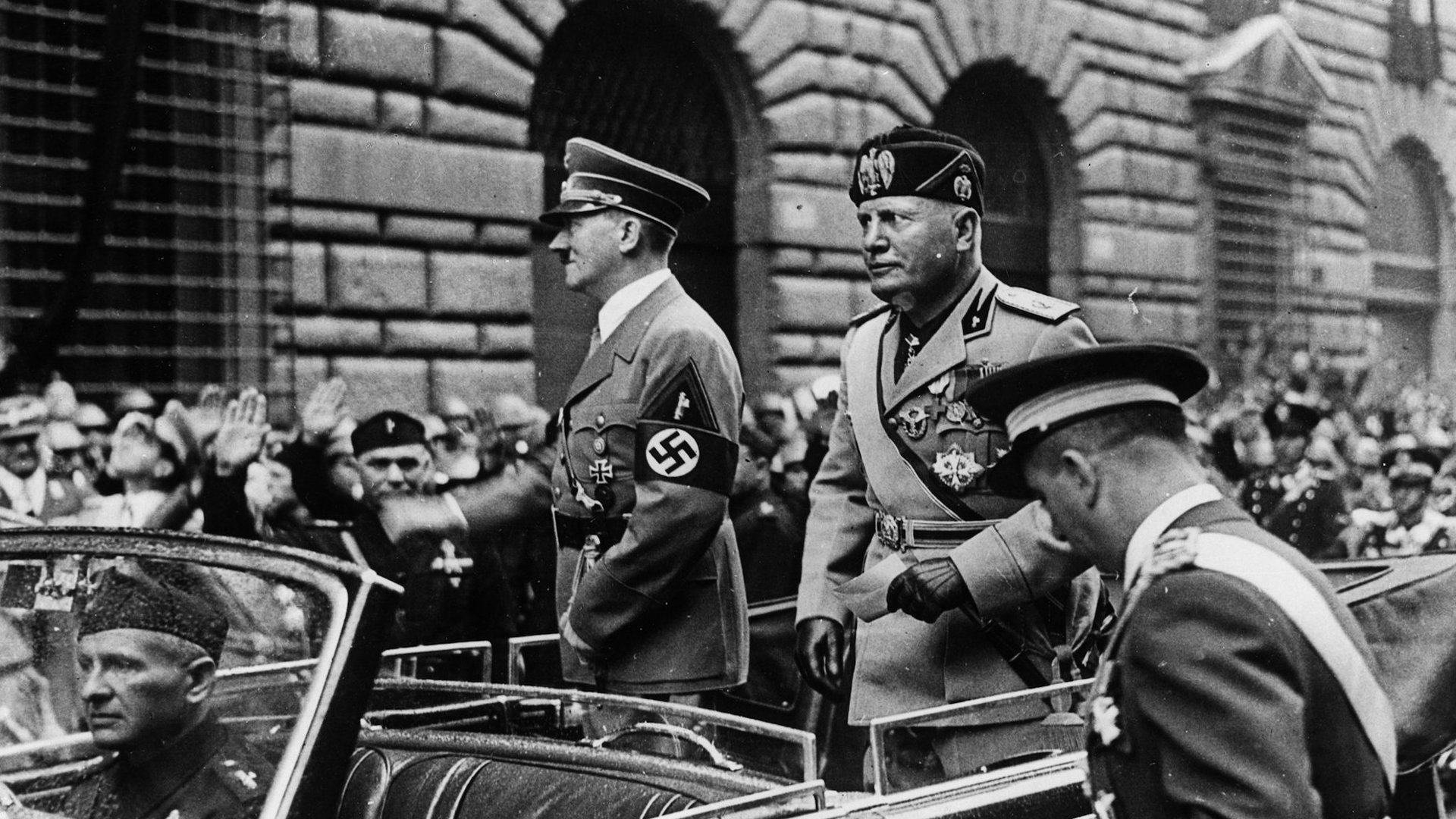Fascism: Power, Propaganda, and the Fall of Democracy

Fascism is an ideology built on authoritarian nationalism, militarism, and suppression of dissent.
The Dive
Fascism emerged in the aftermath of World War I, when economic collapse and political chaos in Europe created fertile ground for authoritarian ideologies. Italy’s Benito Mussolini offered a seductive promise: national unity, strength, and order at the cost of freedom.
The term 'fascism' comes from the Latin word fasces, a bundle of rods bound together with an ax, symbolizing strength through unity and the power to punish. Mussolini used it as a metaphor: the state as an unbreakable collective, tightly bound, intolerant of dissent.
Fascism rejected liberal democracy and socialism. It embraced a strong, centralized state where the leader embodies the will of the nation. The individual didn’t matter—the collective did. This meant loyalty, obedience, and sacrifice were expected, often enforced by violence.
Fascist regimes rely heavily on propaganda to mold public opinion. Mussolini and later Hitler mastered the use of media (radio, film, posters, and rallies) to glorify the state, elevate the leader, and demonize outsiders. Truth became whatever the regime said it was.
In 1933, Hitler came to power in Germany, turning fascist ideas into genocidal policy. Under Nazism (a racialized form of fascism) the regime glorified Aryan supremacy, scapegoated Jews and communists, and built a totalitarian state that controlled every aspect of life.
Fascism wasn’t confined to Europe. In the U.S., fascist sympathizers emerged in the 1930s, mimicking European movements with eerie uniformity. Though never mainstream, their existence exposed how economic fear and racial resentment could fuel fascist dreams, even in a democracy.
The violence of fascism culminated in World War II. Its pursuit of expansion, conquest, and ethnic purity left tens of millions dead. The Holocaust revealed its darkest depths: industrialized genocide driven by ideology, bureaucracy, and silence.
After the war, 'fascism' became a dirty word—but not a dead one. In later decades, it was used (and misused) across the political spectrum, often detached from its historical meaning. Yet the core warning remains: fascism thrives when fear replaces freedom, and order trumps justice.
Why It Matters
Fascism teaches us what can happen when fear is weaponized, truth is manipulated, and power is left unchecked. It’s not just a relic of the 20th century, it’s a blueprint that can re-emerge when democratic institutions are weakened. Studying fascism isn’t about the past alone, it’s about staying vigilant in the present. When we recognize the signs — attacks on the press, scapegoating minorities, or the erosion of civil liberties — we’re better equipped to defend democracy. Fascism doesn’t start with tanks, it starts with silence.
?
What economic and social conditions allowed fascism to gain traction in Europe?
How did propaganda shape public opinion under fascist regimes?
What are the key differences between fascism and other political ideologies?
Can fascism emerge in a democracy? Why or why not?
What warning signs should we watch for in our own societies today?
Dig Deeper
Philosopher Jason Stanley breaks down the modern warning signs of fascist movements.
A stark commentary by fascism scholars who explain what happens when democratic erosion becomes reality.
Related

How a Bill Becomes a Law
From idea to law, every bill takes a long journey through Congress—full of debate, revision, and compromise—before landing on the president’s desk.

Oligarchy
As the wealth and influence of a few ultra-wealthy individuals continue to shape American politics, we must ask ourselves: What is the cost of an oligarchy, and can democracy truly survive under the control of the few?

Democracy: Government by the People
Democracy is more than voting every few years. It is a way of sharing power, protecting rights, and making sure ordinary people have a real voice in how they are governed.
Further Reading
Stay curious!
